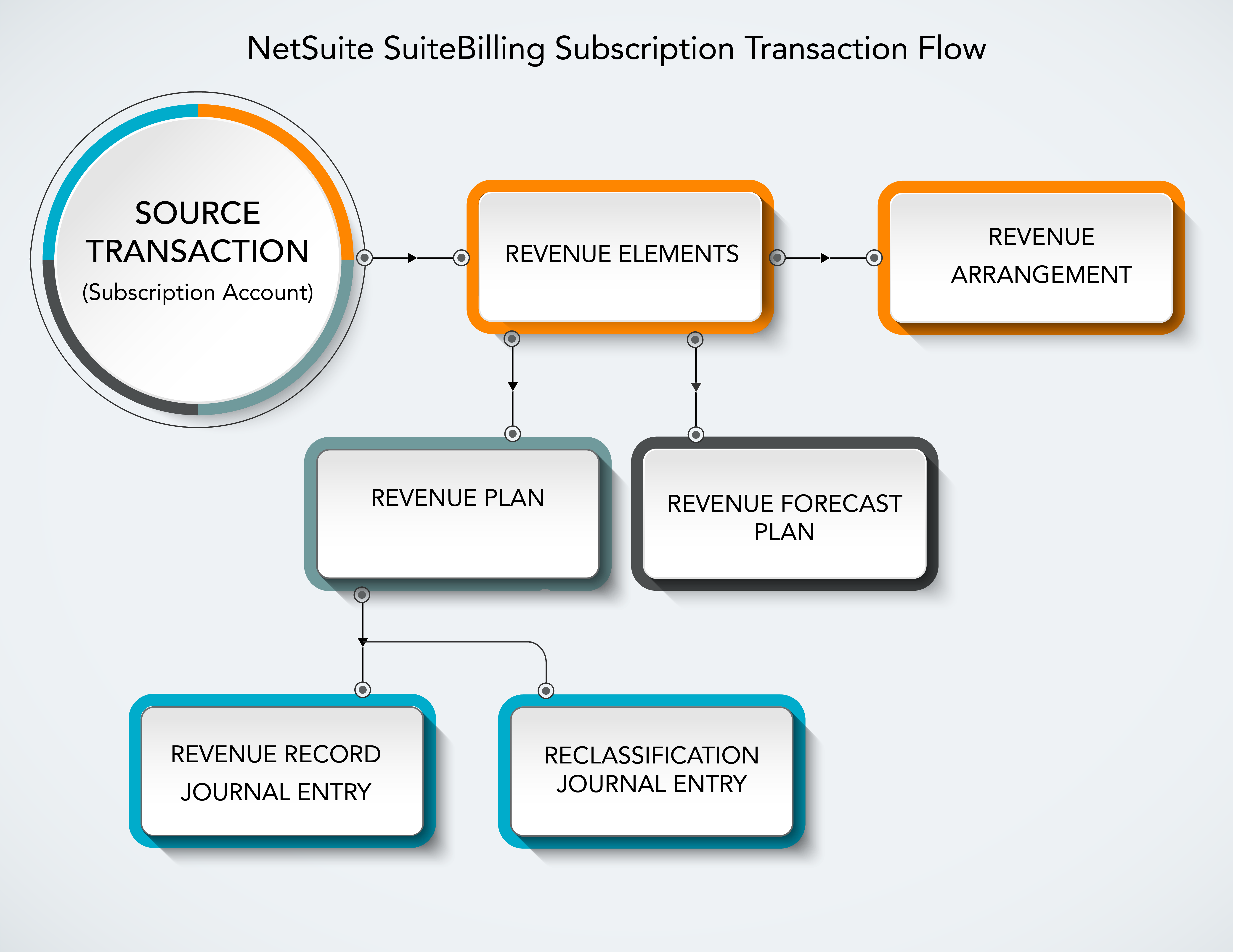Enhance your system visibility by streamlining subscription billing
What’s so ‘suite’ about NetSuite’s SuiteBilling platform? SuiteBilling breathes new life into the subscription billing landscape. Imagine your subscription billing services with enhanced and streamlined visibility that creates an automated approach to revenue forecasting, allocation, recognition, reclassification, and auditing through a rule-based event handling framework. By integrating directly with NetSuite’s Advanced Revenue Management (ARM) module, SuiteBilling provides businesses the ability to defer revenue across future periods according to the rules configured during implementation. In addition, leveraging ARM creates a system that is ASC 606 compliant, and also able to handle other regulatory standards necessary for reporting and auditing.
What are the benefits of NetSuite’s ARM Module?
ARM creates a set of parent-child records that are directly associated with a source transaction, for example, a NetSuite subscription record. These various records outline details around the customer performance obligations and the amount of revenue that is planned to be recognized in each period. These records are generated automatically once the subscription is created. New records are generated only when a subscription modification occurs.
![]()
![]()

![]()
![]()
![]() So, what happens to the revenue schedule when an upsell, down-sell, or cancellation occurs?
So, what happens to the revenue schedule when an upsell, down-sell, or cancellation occurs?
Consumers in today’s market expect subscription packages to be flexible to meet their changing needs. Companies providing subscription-based pricing options should allow their customers to:
- Upgrade or downgrade to different packages,
- Add additional users, family members, etc.
- Have the ability to cancel services after a defined period
- Provide free trial periods
SuiteBilling allows businesses to execute these types of adjustments seamlessly by creating subscription change orders. In addition, it allows for change orders to be created at any point during the term of a contract, and can also be voided when necessary. By accessing the SuiteBilling Accounting Preference Module, an option is provided to enable “Create Revenue Elements for Subscription Revisions” which allows for subscription modifications to generate a separate revenue arrangement, along with any corresponding revenue elements, called ‘Modification Elements’. This feature provides a clear representation of how changes to a subscription will impact revenue forecasts.
From a revenue reporting perspective, authorized SuiteBilling are able to easily see how subscription revisions decrease or increase the planned revenue by generating modification arrangements that provide a positive or negative value.
The below screenshot illustrates the revenue elements associated with a subscription before any subscription revisions have been made.
In the below scenario the quantity was updated from one unit to two units for the second subscription line with an effective date of 4/1/21. Since the effective date was 4/1/21 and the end date of the subscription is 1/31/2022 this resulted in an increase of $10,000 in planned revenue ($1,000 recurring monthly fee at 10 months remaining). The update in quantity generated a new revenue arrangement and revenue element to account for the revenue impact from this upsell.
When a termination occurs, NetSuite generates a separate revenue element that contains a negative revenue amount to account for the impact caused by the termination. This modification revenue arrangement is created with a negative revenue amount to zero out the remaining deferred balance of the subscription revenue arrangement (the original revenue arrangement).
When the accounting preference ‘Create Revenue Elements for Subscription Revisions’ is enabled in SuiteBilling, it can be beneficial to merge the modification revenue arrangement with the subscription revenue arrangement in order to get the correct accounting. This merge can be processed via the Merge Revenue Arrangements for Linked Sources page. Merging these revenue arrangements together provides a more holistic view of the remaining performance obligation, as shown below.
As shown above, the merged revenue arrangement now contains the correct revenue amount of $1,000. Notice the $1,000 of revenue was recognized before the termination and the termination took effect during the second month of the contract. The original revenue arrangements are preserved after the merge is completed and the new revenue arrangement created from the ‘merge’ contains links to the original revenue arrangements.
In Summary:
Business planning relies on accurate forecasting data. With SuiteBilling, it provides a view of the real-time data necessary to make quick decisions, adjust subscription packages as needed, and provide a clear picture of how to move forward when the company is growing, or even downsizing.

